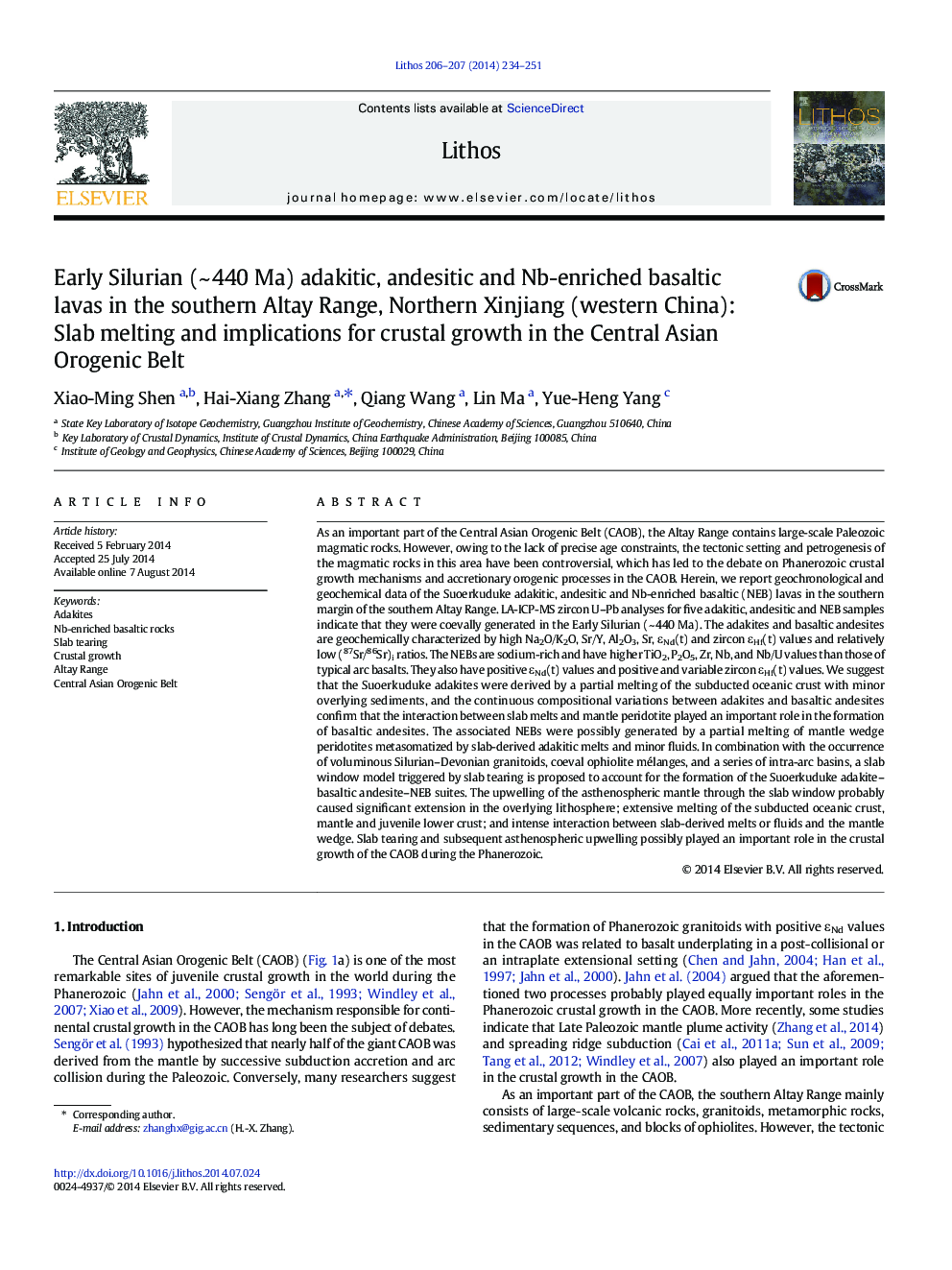| Article ID | Journal | Published Year | Pages | File Type |
|---|---|---|---|---|
| 4715949 | Lithos | 2014 | 18 Pages |
•~ 440 Ma Suoerkuduke adakite–basaltic andesite–Nb-enriched basalt suites in the southern Altay Range•Major and trace element and Sr–Nd–Hf isotope data indicate slab melting.•Slab tearing and the resultant slab window probably caused extension and extensive melting.•Slab tearing played an important role in crustal growth in the Central Asian Orogenic Belt.
As an important part of the Central Asian Orogenic Belt (CAOB), the Altay Range contains large-scale Paleozoic magmatic rocks. However, owing to the lack of precise age constraints, the tectonic setting and petrogenesis of the magmatic rocks in this area have been controversial, which has led to the debate on Phanerozoic crustal growth mechanisms and accretionary orogenic processes in the CAOB. Herein, we report geochronological and geochemical data of the Suoerkuduke adakitic, andesitic and Nb-enriched basaltic (NEB) lavas in the southern margin of the southern Altay Range. LA-ICP-MS zircon U–Pb analyses for five adakitic, andesitic and NEB samples indicate that they were coevally generated in the Early Silurian (~ 440 Ma). The adakites and basaltic andesites are geochemically characterized by high Na2O/K2O, Sr/Y, Al2O3, Sr, εNd(t) and zircon εHf(t) values and relatively low (87Sr/86Sr)i ratios. The NEBs are sodium-rich and have higher TiO2, P2O5, Zr, Nb, and Nb/U values than those of typical arc basalts. They also have positive εNd(t) values and positive and variable zircon εHf(t) values. We suggest that the Suoerkuduke adakites were derived by a partial melting of the subducted oceanic crust with minor overlying sediments, and the continuous compositional variations between adakites and basaltic andesites confirm that the interaction between slab melts and mantle peridotite played an important role in the formation of basaltic andesites. The associated NEBs were possibly generated by a partial melting of mantle wedge peridotites metasomatized by slab-derived adakitic melts and minor fluids. In combination with the occurrence of voluminous Silurian–Devonian granitoids, coeval ophiolite mélanges, and a series of intra-arc basins, a slab window model triggered by slab tearing is proposed to account for the formation of the Suoerkuduke adakite–basaltic andesite–NEB suites. The upwelling of the asthenospheric mantle through the slab window probably caused significant extension in the overlying lithosphere; extensive melting of the subducted oceanic crust, mantle and juvenile lower crust; and intense interaction between slab-derived melts or fluids and the mantle wedge. Slab tearing and subsequent asthenospheric upwelling possibly played an important role in the crustal growth of the CAOB during the Phanerozoic.
Graphical abstractFigure optionsDownload full-size imageDownload as PowerPoint slide
